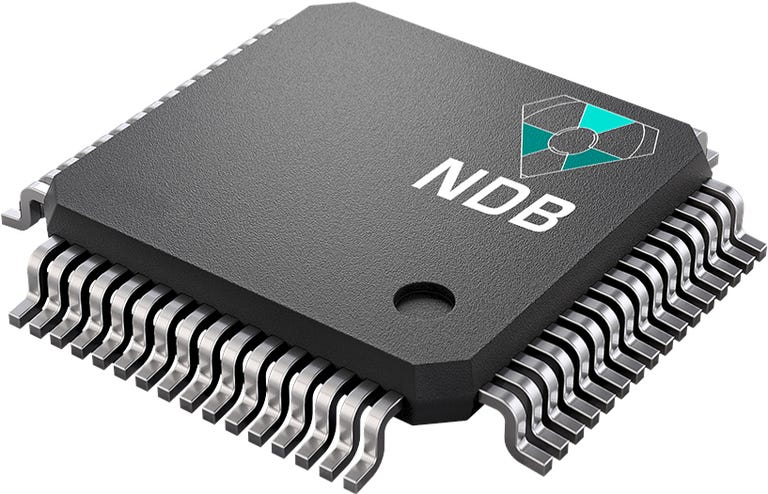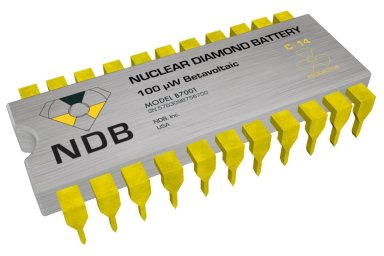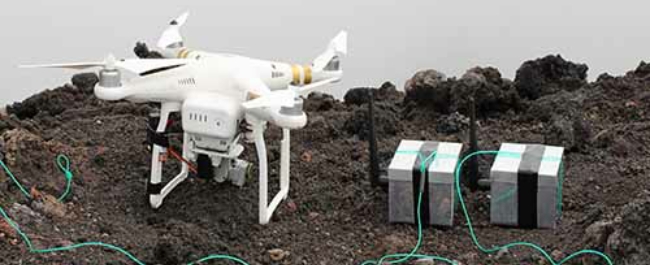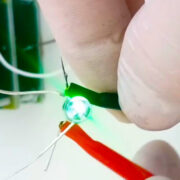Given the relatively short lifespan, overheating, and battery cell supply issues of current battery technologies, they can’t be used everywhere. Take satellites, high-altitude drones, healthcare, or even spacecraft, all of which require energy storage with a very long life. But some companies are claiming that diamond battery technology can kill two birds with one stone: creating energy storage that could last for thousands of years by putting nuclear waste to use… potentially powering everything from EVs to cellphones. Is this the holy grail of battery technology or hype; and more importantly, is it safe? Let’s explore Nano Diamond Batteries and where this might be going.
Modern life relies on mobile battery-powered devices: at work, at home, at school, and while traveling. We need batteries for communication, transportation, storing energy from renewables like solar and wind, you name it … and it’s undeniable that lithium-ion batteries have opened up a world of possibilities.
Even though we’ve seen significant progress with the lithium technology over the past few decades, challenges such as overheating, expensive casings, short lifespan, and underperformance in extreme temperatures still need to be overcome. So the quest for the holy grail of batteries continues.

Aiming to reach carbon neutrality in the next few decades, batteries and renewable power sources need to evolve alongside each other to solve this puzzle. The International Renewable Energy Agency (IRENA) estimates that stationary battery storage will grow from only 2 gigawatts (GW) worldwide in 2017 to around 175 GW in 2030. But batteries aren’t the only way to compensate for the intermittent operation of solar and wind. We also have nuclear power. 1
Nuclear accounted for 10.3% of the world’s electricity generation in 2019. 2 It’s widely considered to be a stable, carbon-friendly energy source that can be used to support the intermittency of other renewables. But besides being expensive and having long construction times, the unresolved problem of what to do with long-lived radioactive waste is crucial for its development. There’s a lot of “not in my backyard” to that debate. If you’re interested, I have an episode on Small Modular Reactors that gets into the future of nuclear power. As of today in the U.S., there are 96 commercial nuclear power reactors currently operating, and more than 90,000 metric tons of highly radioactive nuclear waste, including spent fuel and other material. 3
Pulling together the challenges of conventional batteries and the problems derived from nuclear waste, a new technology called Nano Diamond Battery Technology is being touted as an energy-disruptive innovation.
NDB, a California-based start-up made headlines when it announced that it completed two proof-of-concept tests of its nano diamond battery, made from nuclear waste encased in artificial diamond. But the root of this energy storage technology is known as betavolatics, which is powered by beta decay and goes back to the 1950s.

In 1953, Paul Rappaport proposed the use of semiconductor materials to turn the energy from beta decay into electricity. Unlike common electricity-generation technologies that utilize hydro or wind turbines to spin copper coils within magnets to produce an electric current, betavoltaic devices can generate current when placed close to a radioactive source.
Imagine placing a semiconductor material, like Silicon, in a box with Strontium-90, which is a radioisotope produced from nuclear fission. It has a half-life of almost 30 years.4 A semiconductor material, like Silicon, can both act as an isolator or conductor depending on the conditions it’s subjected to, like temperature, light, or electric current. It’s actually very similar to how solar cells work when collecting solar radiation. In this case, the radioactive element emits beta particles that separate electron and hole pairs in the semiconductor (holes collect on the positive side and electrons collect on the negative side). Bridging the two sides allows the electrons and holes to find each other resulting in an electric current … in short, this turns radiation into electricity. 5 6
Using this principle, in 2016, researchers from the University of Bristol unveiled the world’s first known diamond nuclear battery, which is based on this betavoltaic concept. Tom Scott, Professor in Materials at the University of Bristol, described the advantages as the emission free, long-term production of clean energy from nuclear waste.7 8
A great portion of nuclear waste is graphite, which is used as a moderator and reflector in a nuclear reactor. The graphite becomes radioactive over time because of its exposure to radiation. And depending on the reactor type, the graphite blocks can be extremely large and heavy, as well as irradiated with long-lived radioisotopes, which makes graphite expensive and tricky to dispose of or recycle.9
The reason why graphite is important here is that radioactive graphite contains Carbon-14 (C-14), which turns into harmless Nitrogen-14, an anti-neutrino, and an energetic electron — aka a beta-decay electron. But that’s already TMI … I’m not going to turn this into a chemistry class. I’d probably flunk it.
The idea behind the research from the University of Bristol is to manufacture batteries that can harness this by-product of C-14 as energy. In its gas form at low pressure and elevated temperatures, you can convert it into a radioactive diamond. Then for safety you encapsulate it again in a non-radioactive diamond layer. So it’s a radioactive diamond … in a diamond. Even though the researchers say that only a small level of radioactivity is detected near their diamond, would you really want to use a nuclear powered pacemaker inside your body? 10 11 Actually … there were Plutonium powered pacemakers, but that’s a different video.12
Even though we typically equate nuclear power to great amounts of energy being produced, these betavoltaic batteries can only generate power in the range of microwatts, which is why headlines and press releases about NDB batteries have been overselling it. This is not the future of electric vehicles. If their breakthrough proves to be true, it has some potential … for very targeted scenarios.
The difference between the batteries from Bristol to NDB’s is in the layers of the encasing diamond. While the researchers of Bristol used only a diamond layer to protect the radioactive diamond, NDB combines multiple layers of paneled nano diamonds to protect the core. These micro-sized single crystal diamonds are very good at conducting heat, so they move heat away from the radioactive isotope materials so quickly that the transaction generates electricity.13 8
There are several concepts to ensure safety, but there’s still a lot of questions around this since we haven’t seen any test results from the company yet. But a couple of those things are the diamond encapsulator, which is the most thermally conductive and hardest material available, in addition to containing the radiation within the device.
Next up is the Lock-in System, which helps to prevent proliferation of dangerous nuclear isotopes like Pu-238 and U-232. According to NDB, their battery uses an ion implantation mechanism that prevents it being used for purposes other than power generation. 14 15
Besides these safety claims, the company says its technology has a maximum lifespan of 28,000 years and could one day become a source of low-carbon power for anything that needs it – from EVs to smartphones. Although this technology looks awesome, it’s still highly questionable since the power coming from betavoltaics is so low. Remember, microwatts low.
According to a report, the proof-of-concept design was evaluated by the Lawrence Livermore National Laboratory, which reported a 40% charge improvement in efficiency over a standard diamond. But I couldn’t find any information on how Lawrence Livermore National Laboratory tested the proof-of-concept.
Most of the claims have no hard evidence or proof yet, other than what NDB has reported. NDB doesn’t fully explain what happens to the heat it generates during energy conversion other than to describe thermal vents to dissipate heat. 16
The company mentions several possible applications in their website like consumer electronics, automotive, medical devices, aerospace, but we still don’t have precise specifications. Yet, an image of the battery shows a power level of 100 microwatts.17 It’s important to drive that point home. It’s highly unlikely to power an electric vehicle, let alone an iPhone at microwatt scale. But, it doesn’t mean the tech doesn’t work for more appropriate applications. If enough of these battery cells were combined, they could power small LED displays or devices that require low power, like medical or communication devices … think internet of things (IOT) and pacemakers. But powering EVs that demand an insane amount energy is where media coverage went a little overboard.

So back in the land of reality where do the benefits of this technology make the most sense? And is there a market for it?
Well, the company hopes to start selling the battery to commercial partners, including space agencies for long duration missions by 2023. 18
In addition, NDB isn’t alone in nuclear diamond battery game. The scientists at Bristol saw a great opportunity in extracting and repurposing nuclear waste material, but without overselling it. They spun off Arkenlight, a company formed to take on the commercialization of their diamond battery concept. 19

Morgan Boardman, the new company’s CEO says:
“…It is a very novel approach, which we find that people like because it’s sort of a cosmic rag-and-bone man narrative…” -Morgan Boardman
He also points out that the technology can help with the carbon emissions challenge:
“…With the resources used to manufacture, say, an AAA battery, we would offset nearly 2.5kg of carbon in the manufacture of an equivalent energy density of diamond batteries…” -Morgan Boardman
Unlike NDB, Arkenlight doesn’t claim that their batteries will power cars or even laptops. That’s because they provide thousands of times less power than a conventional AA battery – although they will last thousands of times longer. Arkenlight’s power cells would take about 5,000 years to reach 50% discharge. The company sees their batteries powering small detectors, wireless IoT devices/sensors or medical implants. 19
It can be mechanically stacked in series or parallel for greater power, and can be paired with capacitors for intermittent high power use cases. 20 21
In 2018, Bristol researchers did an interesting experiment to test out the strength and durability of their diamond batteries, placing them at the top of a volcano. In the experiment, a prototype of Arkenlight betavoltaics was used to power sensors inside a remote-monitoring station, known as a ‘dragon egg.’ The eggs were designed to be placed on an active volcano by drone in order to measure humidity, vibrations, and the emissions of toxic gases. They could remain in service for months without depleting their energy. 22

Arkenlight aims to establish a factory at one of the several decommissioned nuclear power plants in the South West of England, or possibly North Wales. That way, the company has easy access to carbon-14 isotopes for battery manufacturing. Boardman estimates that their carbon-14 batteries will begin appearing in devices around 2024 if everything goes well. 19
In terms of challenges, the use of radioactive material complicates matters, so manufacturing them involves a significant amount of care and safety procedures you wouldn’t have with a typical chemical battery. While the process is made safe, the safety infrastructure required to produce it, and governmental permissions, come with big costs.
Even though the researchers from both Bristol University and NDB claim that nuclear batteries have small or no radioactivity level due to the diamond containment, I’m not sure if I’d feel comfortable having a nuclear powered cellphone even if it was possible at this point. Putting aside the overhyped headlines, there’s still some interesting promise and use cases for diamond batteries … even though they’re still in their theoretical phase. We’re going to need to wait a few more years until NDB and Arkenlight have some real prototypes and solid results to call this one. Not every battery technology has to be a lithium ion killer. It’s okay to have an exciting breakthrough for a very targeted market, which is what this is.
- electricity storage and renewables: Costs and markets to 2030 ↩︎
- World Nuclear Industry Status Report 2020 ↩︎
- As nuclear waste piles up, scientists seek the best long-term storage solutions ↩︎
- Strontium-90 ↩︎
- Prototype nuclear battery packs 10 times more power ↩︎
- What is Betavoltaic Power? ↩︎
- Nano Diamond Batteries And The Future of Power Production ↩︎
- How Could Nano-Diamond Batteries Revolutionize Power Generation? ↩︎
- Radioactive Waste Containing Graphite Management ↩︎
- Nano Diamond battery explained ↩︎
- ‘Diamond-age’ of power generation as nuclear batteries developed ↩︎
- ORAU – Plutonium Powered Pacemaker (1974) ↩︎
- The Radioactive Diamond Battery That Will Run For 28,000 Years ↩︎
- Nano Diamond Battery Provides Universal Applicability ↩︎
- NDB – Technology ↩︎
- The Nano-Diamond Battery (NDB) — Is It Too Good To Be True? ↩︎
- The Battery of the Future? ↩︎
- New Diamond Battery Will Last 28,000 Years, Powered By Nuclear Waste ↩︎
- FEATURE: Diamond batteries are forever ↩︎
- Arkenlight ↩︎
- Diamond Betavoltaic Battery: C14-DBV ↩︎
- ‘Dragon eggs’ hatched to monitor volcanic activity ↩︎

















Comments